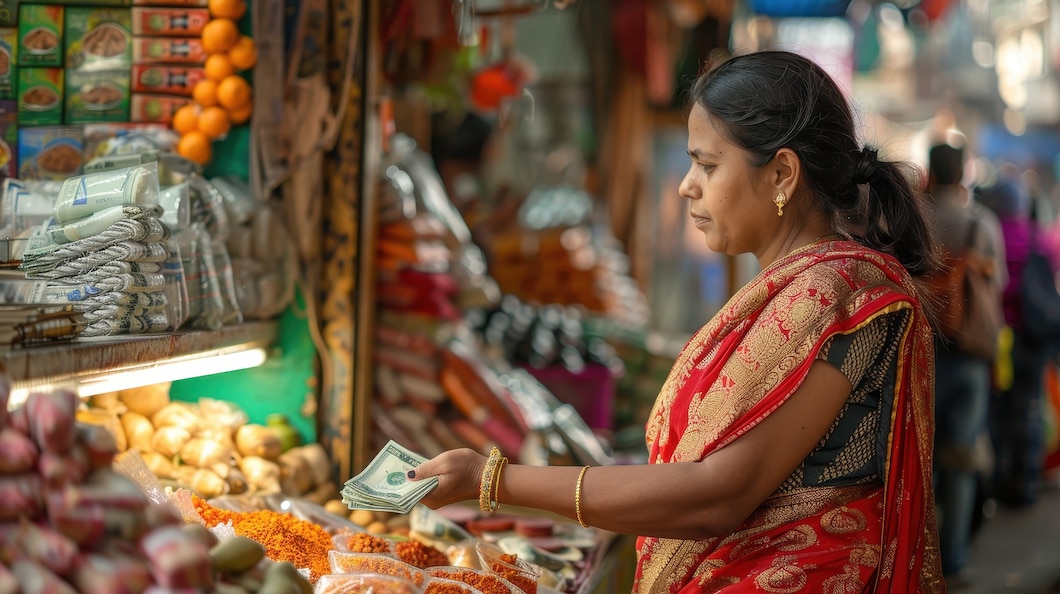India's Inflation Reaches 5.81% in October
India's consumer price inflation surged to 5.81% in October, marking the highest rate in 14 months. The rise is mainly attributed to higher food prices, particularly tomatoes and edible oils. Food accounts for nearly half of the inflation basket, and a sharp increase in vegetable costs, due to uneven rainfall affecting production, was a major contributor.
Impact of Edible Oil and Tomato Prices
Tomatoes, a staple in Indian kitchens, saw a price hike due to disrupted production caused by unseasonal rains. Additionally, the government's decision to increase import taxes on edible oils by 20 percentage points in September intensified price pressures. These factors, combined with global inflationary trends, further strained household budgets.
Rising Inflation and Core Inflation Insights
According to a Reuters poll, the annual retail inflation in India is expected to continue its upward trajectory, with a range from 5.00% to 6.30%. Core inflation, excluding volatile items like food and energy, was projected at 3.60%, reflecting strong domestic demand, partly driven by festive spending and rising gold prices.
Outlook on Inflation and RBI's Response
Economists warn that inflation may remain elevated due to ongoing climate risks, a weaker rupee, and geopolitical factors. While some analysts anticipate the Reserve Bank of India (RBI) to reduce interest rates in December, a return to the 4% medium-term target is unlikely until 2026, suggesting that rate cuts might be delayed into early next year.
For further reading, you can check out the following sources:



 Citi Sets Bullish 2026 Target for STOXX 600 as Fiscal Support and Monetary Easing Boost Outlook
Citi Sets Bullish 2026 Target for STOXX 600 as Fiscal Support and Monetary Easing Boost Outlook  Asian Currencies Steady as Markets Await Fed Rate Decision; Indian Rupee Hits New Record Low
Asian Currencies Steady as Markets Await Fed Rate Decision; Indian Rupee Hits New Record Low  BOJ Governor Ueda Highlights Uncertainty Over Future Interest Rate Hikes
BOJ Governor Ueda Highlights Uncertainty Over Future Interest Rate Hikes  Asian Currencies Edge Higher as Markets Look to Fed Rate Cut; Rupee Steadies Near Record Lows
Asian Currencies Edge Higher as Markets Look to Fed Rate Cut; Rupee Steadies Near Record Lows  Asia’s IPO Market Set for Strong Growth as China and India Drive Investor Diversification
Asia’s IPO Market Set for Strong Growth as China and India Drive Investor Diversification  Gold Prices Steady as Markets Await Key U.S. Data and Expected Fed Rate Cut
Gold Prices Steady as Markets Await Key U.S. Data and Expected Fed Rate Cut  Asian Currencies Steady as Rupee Hits Record Low Amid Fed Rate Cut Bets
Asian Currencies Steady as Rupee Hits Record Low Amid Fed Rate Cut Bets  Oil Prices Hold Steady as Ukraine Tensions and Fed Cut Expectations Support Market
Oil Prices Hold Steady as Ukraine Tensions and Fed Cut Expectations Support Market  European Stocks Rise as Markets Await Key U.S. Inflation Data
European Stocks Rise as Markets Await Key U.S. Inflation Data  Dollar Holds Steady as Markets Shift Focus to 2026 Rate Cut Expectations
Dollar Holds Steady as Markets Shift Focus to 2026 Rate Cut Expectations  Oil Prices Rise as Ukraine Targets Russian Energy Infrastructure
Oil Prices Rise as Ukraine Targets Russian Energy Infrastructure  Dollar Slides to Five-Week Low as Asian Stocks Struggle and Markets Bet on Fed Rate Cut
Dollar Slides to Five-Week Low as Asian Stocks Struggle and Markets Bet on Fed Rate Cut  RBI Cuts Repo Rate to 5.25% as Inflation Cools and Growth Outlook Strengthens
RBI Cuts Repo Rate to 5.25% as Inflation Cools and Growth Outlook Strengthens  U.S. Futures Steady as Rate-Cut Bets Rise on Soft Labor Data
U.S. Futures Steady as Rate-Cut Bets Rise on Soft Labor Data  China’s Services Sector Posts Slowest Growth in Five Months as Demand Softens
China’s Services Sector Posts Slowest Growth in Five Months as Demand Softens  Europe Confronts Rising Competitive Pressure as China Accelerates Export-Led Growth
Europe Confronts Rising Competitive Pressure as China Accelerates Export-Led Growth 































